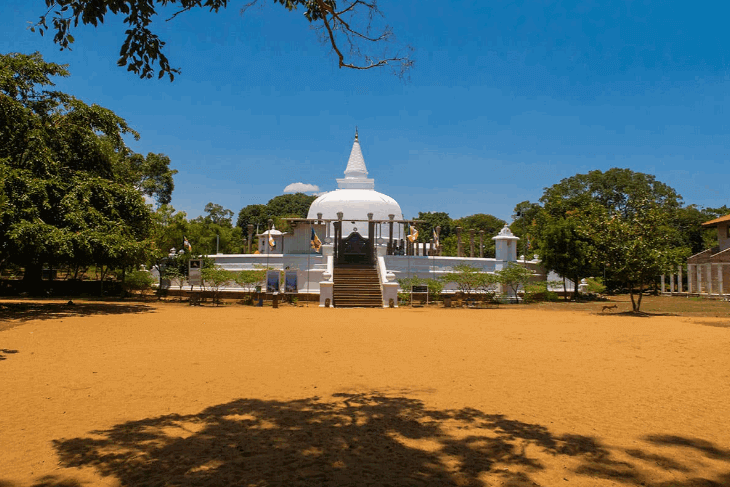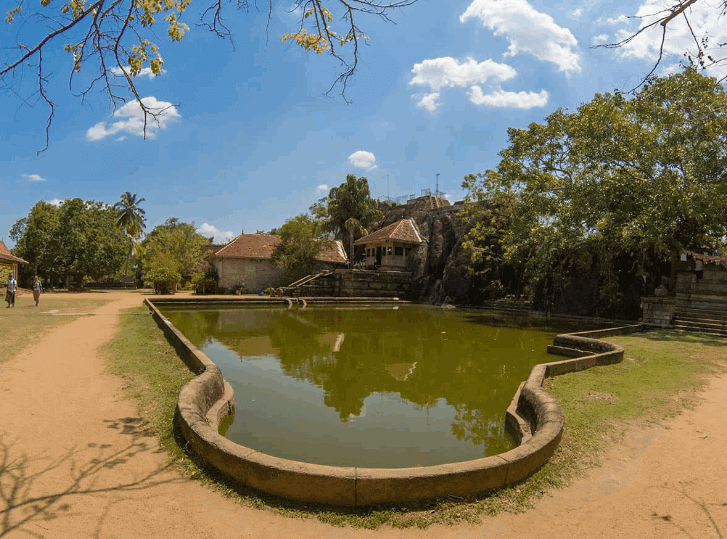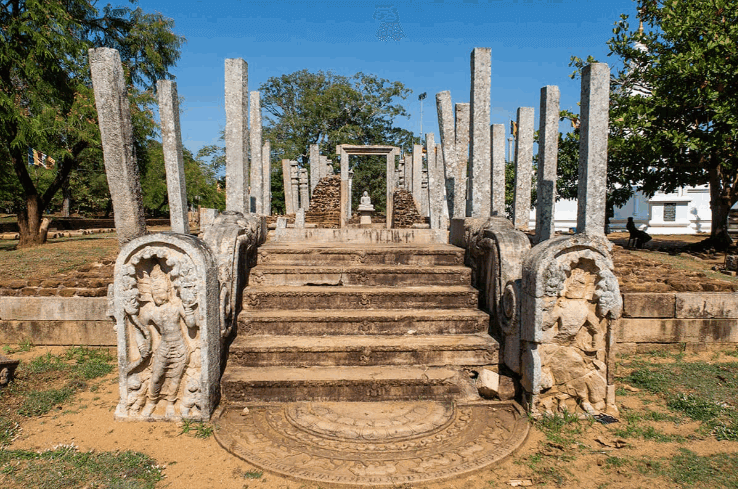
Anuradhapura is famous for being the foundation of ancient civilization and archeological sites in Sri Lanka. UNESCO has declared it a World Heritage Site. The city is located on the banks of the historic Malvathu Wa River, 205 km north of Colombo, the current capital of Sri Lanka. Anuradhapura is one of the most populous cities in the world since ancient times. The city was the capital of Sri Lanka from the 4th century BC to the 11th century AD. Anuradhapura was one of the most influential cities in South Asia in terms of political, commercial, and civic amenities during this period. The ancient city, which covers an area of about 16 square kilometers, is considered sacred by Buddhists. Archaeological excavations have revealed that settlements were formed at the dawn of history in the tenth century BC.

Human society in the area dominated the use of iron. From 700 to 600 BC, the population began to grow here. Because the land in the river basin was fertile and had irrigation facilities. The city was built here between 500 and 250 BC. It is mentioned in the Sri Lankan history book ‘Mahavamsa’ that King Pandukavaya planned this city. It is said of Anuradhapura in the Mahavamsa that King Pandukavaya dug a dighi here, built a common cemetery, a slaughterhouse, a temple of the queen, Mahabalisthan, etc. He built a guest house for the monks. Established an ashram for Brahmins and a clinic and rest center for the sick. It is said that Maharaja Pandukavaya established his capital at Anuradhapura in the 4th century BC. He built the capital and the outskirts of the city according to an integrated plan and built a reservoir called Abhayabapi.

He also established temples called ‘Kalbela’ and ‘Chittaraja’ for the purpose of Yaksha. During his reign, slaves and chandals lived in separate villages on the outskirts of the city. He demarcated the town and the village. The spread of Buddhism in Sri Lanka began during the reign of King Devanampriya from 250 to 210 BC. King Devanampriya was a contemporary of the famous Indian Emperor Ashoka. With the spread of Buddhism, the importance of Anuradhapura as a city increased. From this time onwards, all the famous installations started to develop. The city wall was built during the reign of King Kutkanvatisya. Later, during the reign of King Basab, the height of the wall was increased and a guardhouse was built, the ruins of which are still there. Eight of the places that tourists are amazed to see in Anuradhapura are called Mahasthapana.
These eight Mahasthapanas are Srimahabodhi, Ruanvelishva, Thuparamaya, Lobhamahapay, Abhayagiri, Dagab, Jetavanram, Mirisavetistupa, and Lankaram. Raja Basab greatly increased the civic amenities of Anuradhapura. He dug lots of lakes for the citizens. These reservoirs had paved drains for water supply. There was a garden in the city. Of these gardens, Ranmasu Gardens could be used only by members of the royal family. There were separate gardens for ordinary city dwellers. There were several hospitals for the treatment of the common people. In the fourth century AD, King Upatishya II built a shelter for the disabled. The next king, Buddhasya, was an expert in medicine. He established a hospital for the tenants. The ruins of this hospital still amaze tourists today. King Buddhasya also established a hospital for the treatment of animals.
Among the ancient monuments of Anuradhapura, which are still of special interest to tourists are Ratna Prasad, Dakshinastupa, Ishurumunia, Magul Wana, Rani’s Palace and Temple, Selasetia, Kiribath Bihar, Nakbihar, Kuttam Pakuna, Samadhimurti, Toluila. There are three types of installations in the ruins. The first type of structure is the bell-shaped temple building, the second type of structure is the palace and the third type of structure is the lake with the paved ghats. There are altars and various sculptures on the wharf. These lakes are scattered in different parts of the city and in the surrounding forests. Here you will see the 13-meter high granite Buddha statue of Aokna Buddha. It was built during the reign of King Dathusen. You will find the Isrumian temple built in the third century. This temple is famous for its rock carvings.
Not to be missed here is a carving called Lovers, inspired by the story of Saliya, the son of King Dutugamanu, and his lover. This is a wonderful carving image. Another special attraction of Anuradhapura is its monasteries and stupas. The sanctuary is the largest monastery complex here. There are also temples of Mihintal, Monastery of Jethawan, Seya of Vanveni. At present Anuradhapura has about 56,632 inhabitants of various nationalities including Sinhalese, Sri Lankan Tamils, Indian Tamils, Sri Lankan Moors. It is said that the capital of the demon king Ravana described in the Hindu epic Ramayana was Anuradhapura. Later Rama burnt the capital. Every day countless tourists come to this ancient city and are amazed to see the incomparable glory of the ancient civilization of Sri Lanka.
